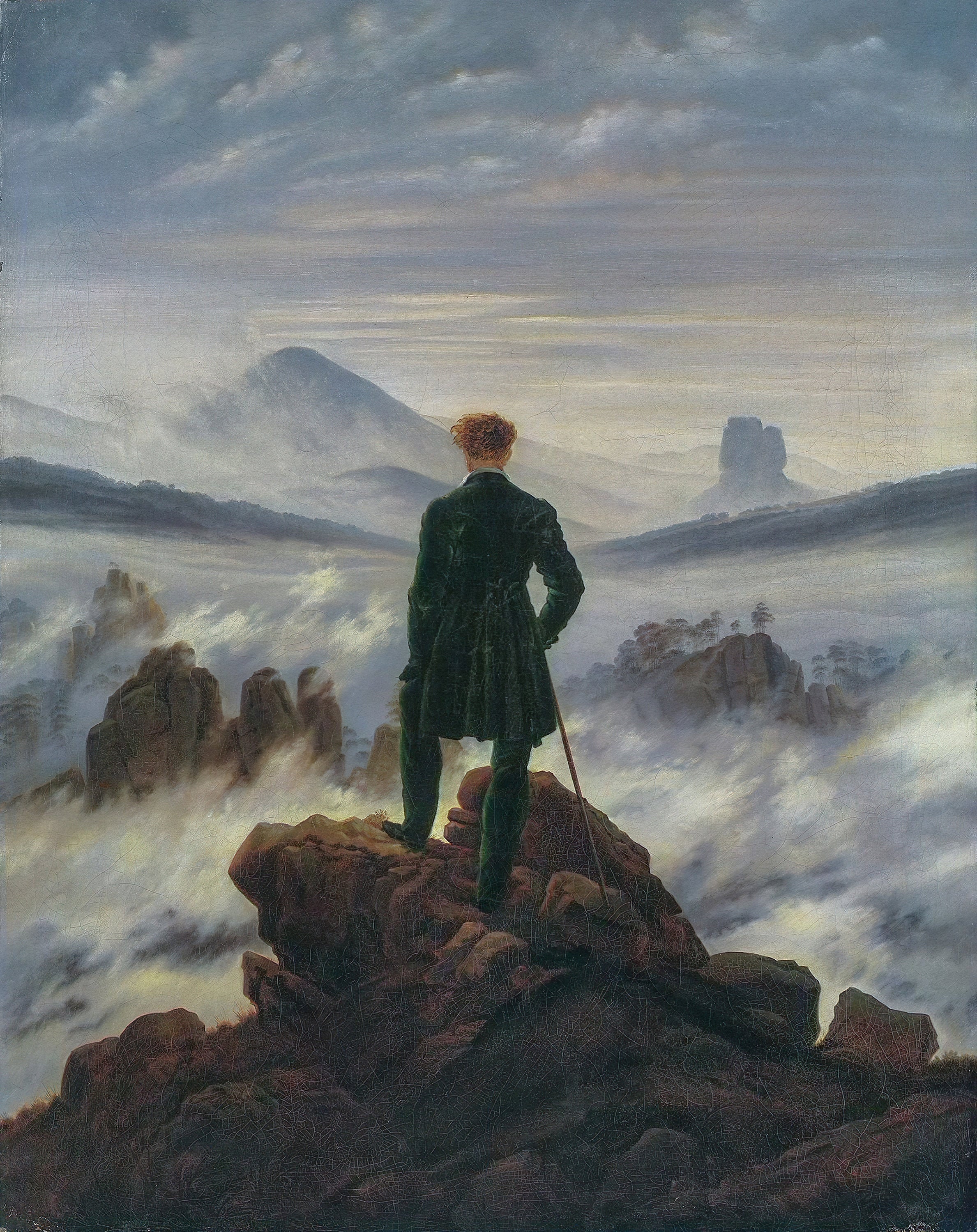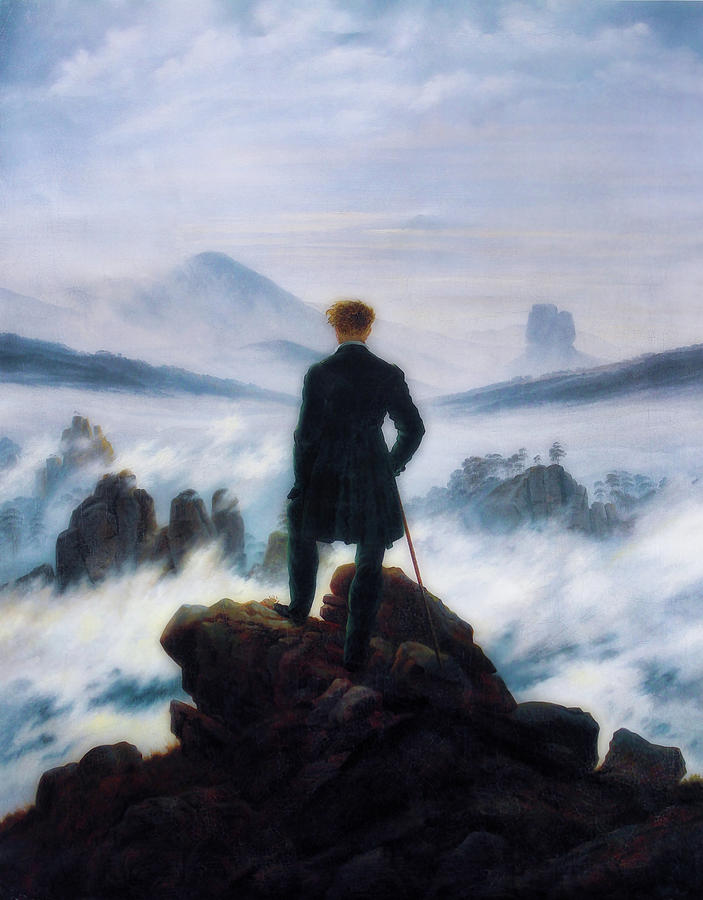

Through the wreaths of fog, forests of trees can be perceived atop these escarpments. In the middle ground, several other ridges, perhaps not unlike the ones the wanderer himself stands upon, jut out from the mass. His hair caught in a wind, the wanderer gazes out on a landscape covered in a thick sea of fog.


He is wrapped in a dark green overcoat, and grips a walking stick in his right hand. In the foreground, a young man stands upon a rocky precipice with his back to the viewer. It currently resides in the Kunsthalle Hamburg in Hamburg, Germany.
WANDERER ABOVE THE SEA LICENSE
This is a part of the Wikipedia article used under the Creative Commons Attribution-Sharealike 3.0 Unported License (CC-BY-SA).Wanderer above the Sea of Fog, also known as Wanderer above the Mist or Mountaineer in a Misty Landscape, is an oil painting by the German Romantic artist Caspar David Friedrich. Robert Macfarlane discusses the painting in terms of its significant influence on how mountain climbing has been viewed in the Western world since the Romantic era, calling it the "archetypical image of the mountain-climbing visionary", and describing its power in representing the concept that standing on mountain tops is something to be admired, an idea which barely existed in earlier centuries.

Wanderer in German can mean either "wanderer" or "hiker". In German, the title is "Wanderer über dem Nebelmeer". Some meaning of this work is lost in the translation of its title. Gaddis (2004) felt that the impression the wanderer's position atop the precipice and before the twisted outlook leaves "is contradictory, suggesting at once mastery over a landscape and the insignificance of the individual within it". Dembo (2001) sympathised, asserting that Wanderer presents a metaphor for the unknown future. Gorra's (2004) analysis was that the message conveyed by the painting is one of Kantian self-reflection, expressed through the wanderer's gazings into the murkiness of the sea of fog. Wanderer above the Sea of Fog is true to the Romantic style and Friedrich's style in particular, being similar to other works such as Chalk Cliffs on Rügen and The Sea of Ice. The rocks on which the traveler stands are a group on the Kaiserkrone. The group of rocks in front of it represent the Gamrig near Rathen. The mountain in the background to the left could be either the Rosenberg or the Kaltenberg. In the background to the right is the Zirkelstein. The painting is composed of various elements from the Elbe Sandstone Mountains in Saxony and Bohemia, sketched in the field but in accordance with his usual practice, rearranged by Friedrich himself in the studio for the painting. Beyond here, the pervading fog stretches out indefinitely, eventually commingling with the horizon and becoming indistinguishable from the cloud-filled sky. In the far distance, faded mountains rise in the left, gently leveling off into lowland plains in the east. It has been considered one of the masterpieces of Romanticism and one of its most representative works. Wanderer above the Sea of Fog (German: Der Wanderer über dem Nebelmeer), also known as Wanderer above the Mist or Mountaineer in a Misty Landscape, is an oil painting c. 1818 by the German Romantic artist Caspar David Friedrich.


 0 kommentar(er)
0 kommentar(er)
